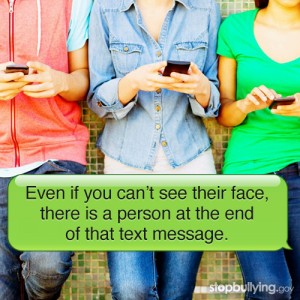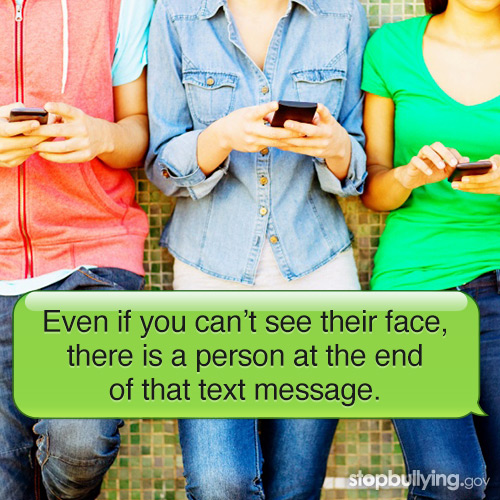
It is no wonder so many movies, TV shows, video games, and other forms of entertainment include bullying themes. It is because almost everyone can relate to stories about bullying. When a storyline reflects bullying in the real world, it is both compelling for audiences while also acting as a powerful tool for change.
Children’s Media
If you want to open the dialogue with your children start with Sesame Street. They have been on the forefront of childhood educational programming for over forty-two years! The TV show deals with heavy topics ranging from parents in jail to bullying and it presents them in a way that can be easily understood by children. Moreover, the show has a wide array of resources available in order to deal with children who are bullies, children who are victims of bullying, and children who are bystanders to bullying. You can find the resources here.
[see also – Cyberbullying: How to Detect, Prevent, and Take Action Against It]
There are some frightening statistics that shed light on how dire the situation of sending the wrong messages about bullying actually are. On average, there were about 14 incidents per hour of social aggression in the 50 most watched television shows among youths two to 11 years old. To make matters worse, about nine out of 10 shows contained the bad behavior that falls under the purview of or motivating acts of bullying. Social (or relational) aggression refers to behavior that is intended to harm friendships, social status, or self-esteem. In contrast to physical aggression, social aggression may use verbal slights and non-verbal body language to reject or exclude others, and it may be indirect, involving rumor or manipulation (Underwood, 2003). Many TV shows, including ones on Disney, contain a weekly dose of social aggression. Whether it is Maya on Girl Meets World or Trish on Austin and Ally, each show’s character has the potential to promote a positive message to older children, who are more apt to discerning the underlying message that social aggression is detrimental in the long-term despite achieving short-term goals. In doing so it risks sending a negative message to younger kids, who may not appreciate the nuances and view the short term gains as the only takeaway.
This month Disney is spotlighting the choose kindness campaign. Girl Meets World, the sequel to Boy Meets World, had a special episode that dealt with bullying. For anyone who watched the original Boy Meets World, this episode came full circle as Corey’s bully from his younger years is now his peer and has asked for forgiveness. Many of the children’s media groups have created campaigns to fight bullying. Learn more about Nick’s The Big Help, Cartoon Networks, The Stop Bullying: Speak Up and “Choose Kindness” part of the Disney ABC Television Group’s efforts to create a bullying prevention campaign to encourage children and parents across the nation to help put an end to bullying by choosing kindness. The Disney Kindness campaign partners include the nonprofit GLSEN, Pacer’s National Bullying Prevention Center and GLAAD.
Adolescence Media
As awareness grows over the issue of teen bullying, TV has taken notice. Some shows like Pretty Little Liars on ABC Family & Glee on Fox, portray bullying from physical, verbal, and cyber aspects. Glee handled multiple episodes arc on bullying regarding their prominent LGBT character, Kurt. The entire premise of PLL (Pretty Little Liars) is about bullying and cyberbullying taken to such extremes, although by no means abnormal in an actual school setting, that certain girls begin fearing for their lives. This makes sense since more than 15% of high school students (grades 9—12) were electronically bullied in the past year. PLL also spotlights girl bullying that goes predominantly unnoticed. Even though PLL may be fun to watch, at times I take a step back and wonder how nobody has helped girls who are actually involved in extreme bullying perpetrated by other girls.
Adult Media
From reality TV shows that some adults watch like The Real Housewives franchise, Kitchen Nightmares and even Survivor, the theme of bullying is a main component of the shows. Many of the reality TV shows encourage their participants to form alliances, gossip, and deceive others. While children are not the target audience for these shows, they do watch them, the issue begins with them viewing without adults who could potentially clarify confusing concepts about bullying to ensure their child is taking away the intended messaging. A study by the Girl Scouts, “Real to Me: Girls and Reality TV”, found that: “All of the girls in our study feel that reality shows promote bad behavior. The vast majority think these shows often pit girls against each other to make the shows more exciting” (86%), “make people think that fighting is a normal part of a romantic relationship” (73%), and “make people think it’s okay to treat others badly (70%).” The upshot is that reality TV shows twice the number of aggressive acts as other shows.
However, if so many people are victims of bullying, why do they come home and view it on television? Watch TV with your children and teens and initiate an open discussion. Use this discussion form to make it a learning moment. While TV has almost unparalleled entertainment value, it can also be a great tool for teaching and learning about social norms and the related causes and effects.
By Rachel A. Adler
Online Learning Tips Contributor

Comments are closed.